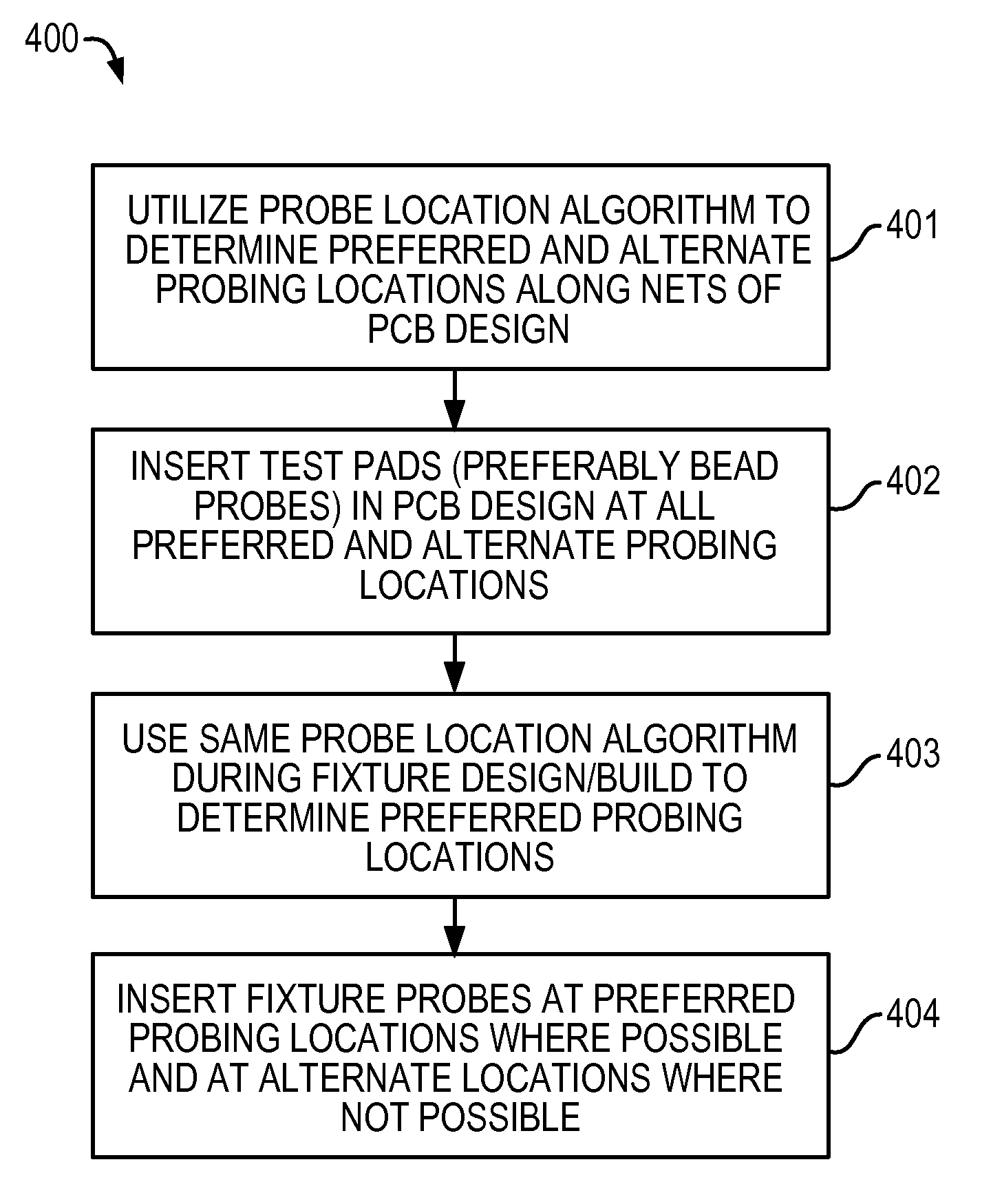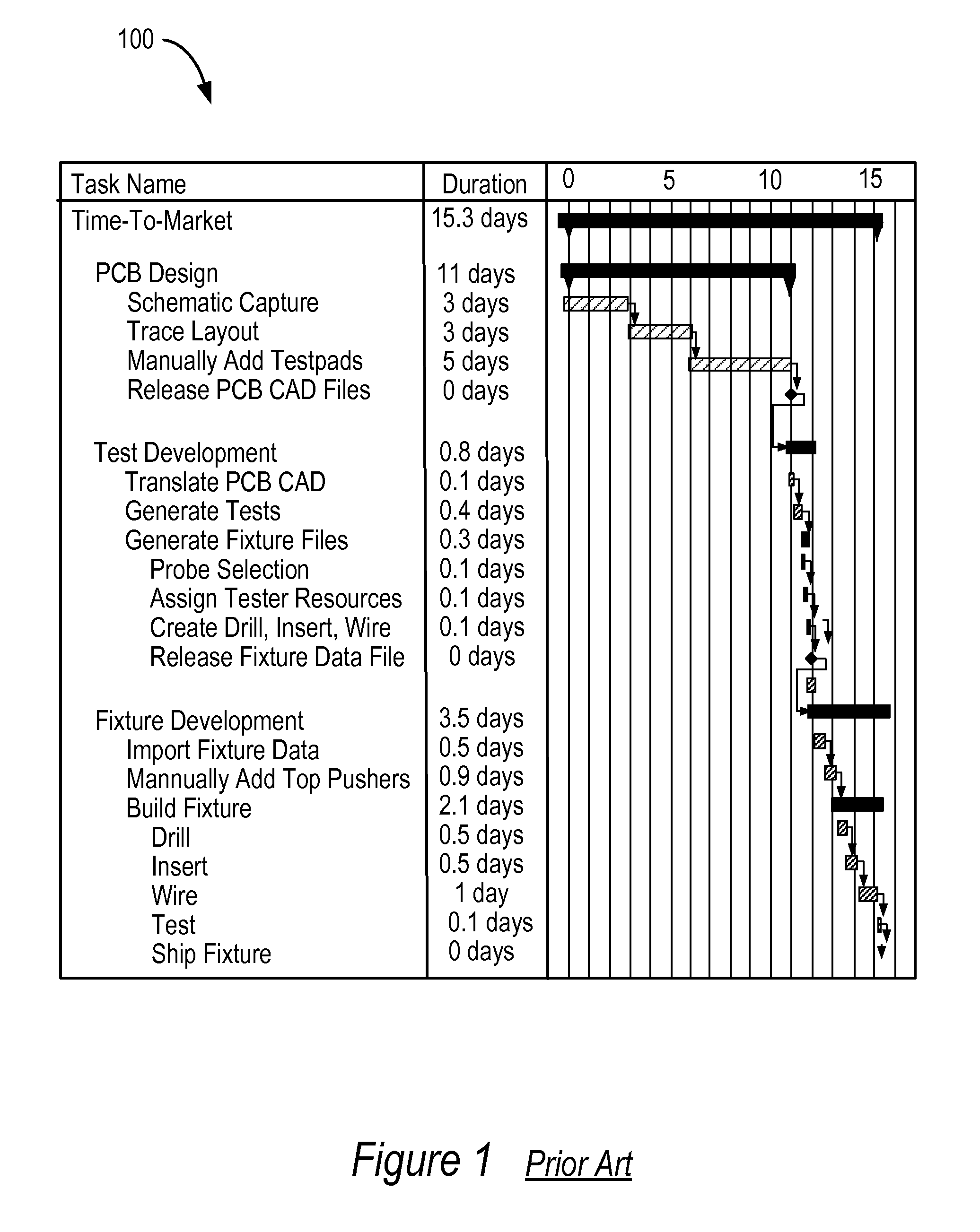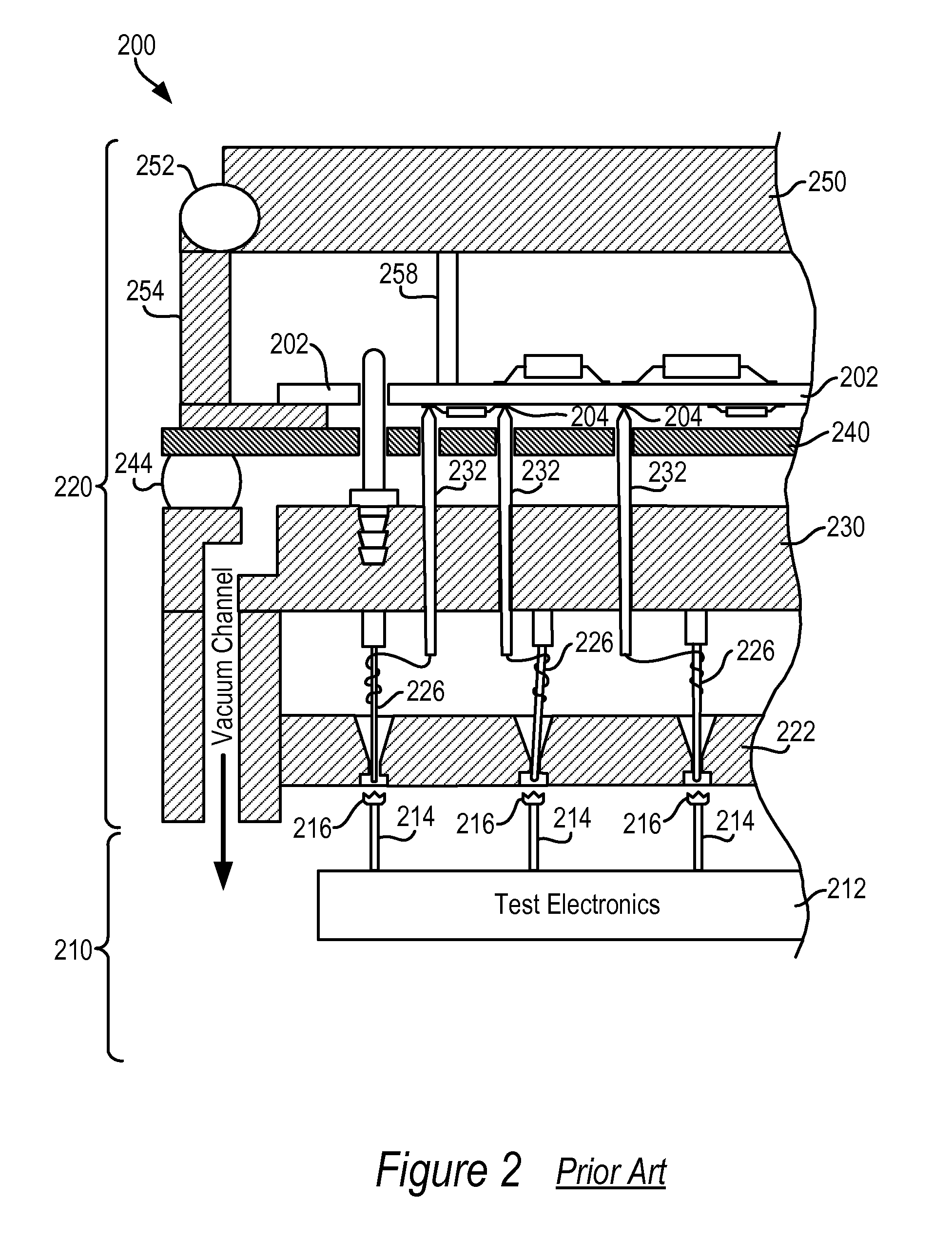Method for improving a printed circuit board development cycle
a technology of printed circuit boards and development cycles, applied in the direction of instrumentation, program control, inspection/indentification of circuits, etc., can solve the problems of difficult automation of points, adversely affecting surrounding circuitry, and changing the transmission line characteristics of traces over which high-speed signals are communicated, so as to improve the time-to-market of pcb assemblies
- Summary
- Abstract
- Description
- Claims
- Application Information
AI Technical Summary
Benefits of technology
Problems solved by technology
Method used
Image
Examples
Embodiment Construction
[0023]For purposes of clarity, the following terms are defined:
[0024]“net”—a signal transmission line which passes signals between two or more endpoints over an electrically conductive path; may be implemented as one or more of any of, including combinations of, the following: a trace, a via, a wire, a component lead, a solder ball, a wire bond, or any other electrically conductive element electrically connected between the two or more endpoints and through which the signal passes;
[0025]“test pad”—a point on a net accessible for probing, typically characterized by a surface area large enough to accommodate a probe head;
[0026]“fixture probe”—an electrically conductive element of a tester fixture which operates as a passive transmission line at least between a first end and a second end of the electrically conductive element, the first end configured to electrically contact a test pad of a circuit and the second end configured to electrically contact another electrical component of in...
PUM
 Login to View More
Login to View More Abstract
Description
Claims
Application Information
 Login to View More
Login to View More - R&D
- Intellectual Property
- Life Sciences
- Materials
- Tech Scout
- Unparalleled Data Quality
- Higher Quality Content
- 60% Fewer Hallucinations
Browse by: Latest US Patents, China's latest patents, Technical Efficacy Thesaurus, Application Domain, Technology Topic, Popular Technical Reports.
© 2025 PatSnap. All rights reserved.Legal|Privacy policy|Modern Slavery Act Transparency Statement|Sitemap|About US| Contact US: help@patsnap.com



